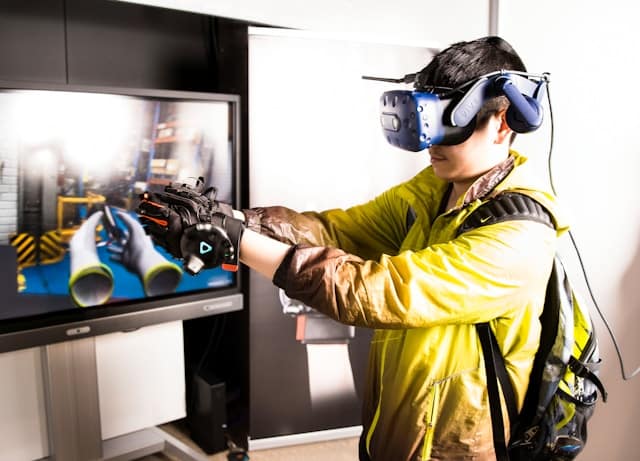Can AI-Powered Smart Glasses Improve Quality of Life for the Visually Impaired?

Living with visual impairments can pose a myriad of challenges, hindering individuals from partaking in everyday activities many take for granted. However, innovative assistive technology, such as AI-powered smart glasses, are emerging to bridge this gap. These devices are designed to assist visually impaired people, enabling them to interact with their surroundings more effectively. This article delves into the role smart glasses play in improving the quality of life for people with low vision.
The Rise of Assistive Technology
Assistive technology has fundamentally changed the way visually impaired people interact with the world. From text-to-speech software to tactile systems, a plethora of innovative solutions have been introduced to help these individuals navigate their daily lives. Among these advancements, AI-powered smart glasses stand out as a game-changing tool.
En parallèle : How Is Machine Learning Being Used to Enhance Cybersecurity Measures?
Smart glasses are wearable computer glasses that add information to what the wearer sees. These devices use artificial intelligence to interpret visual data, allowing users to navigate their environment more effectively. They can recognize faces, objects, and read out text, thereby enabling people with low vision to interpret their surroundings better. The ultimate goal is to enhance the quality of life for the visually impaired, by providing them with greater independence and self-reliance.
Understanding AI-Powered Smart Glasses
AI-powered smart glasses are more than just an impressive feat of technology; they are transformative devices intended to aid the visually impaired. Essentially, these glasses incorporate a miniaturized computer, taking advantage of AI algorithms to analyze visual data in real time.
A voir aussi : How Are Augmented Reality Apps Transforming Museum Visits for Enhanced Learning?
This technology enables the glasses to identify objects in the environment and provide auditory feedback to the wearer. For instance, they can read out text from a book or a street sign or recognize a familiar face in a crowd. These glasses can even guide users towards specific objects or warn them of potential obstacles, helping them navigate unfamiliar environments with greater ease.
Envisioning a Brighter Future with Smart Glasses
Envision, a leading company in the field of assistive technology, has developed a line of AI-powered smart glasses designed specifically to cater to the needs of individuals with vision impairment. These glasses serve as an extra pair of eyes, enabling users to perceive their surroundings in a way that would not be possible through their limited vision alone.
Envision’s glasses utilize an advanced AI algorithm that can identify text in over 60 languages, recognize faces, detect objects, and even describe entire scenes. The glasses also feature an intuitive interface, allowing users to customize settings according to their specific needs and preferences. Envision's glasses are a testament to how far assistive technology has come, and the potential it holds for the future.
Overcoming Challenges and Limitations
While the prospect of AI-powered smart glasses is undoubtedly exciting, it's important to acknowledge the challenges and limitations of this technology. For one, these devices can be costly, putting them out of reach for many who could benefit from them. In addition, there is also the issue of user acceptance, as some individuals may find the glasses intrusive or uncomfortable to wear.
Furthermore, while AI technology is rapidly advancing, it is not flawless. There may be instances when the glasses misidentify objects or fail to accurately read out text. However, these are challenges that technology developers are constantly working to overcome, and with each new iteration, smart glasses are becoming more reliable and user-friendly.
The Future of AI-Powered Smart Glasses
Despite the challenges, the future of AI-powered smart glasses looks promising. As technology continues to advance, these devices are likely to become more affordable, accessible, and efficient, opening up new possibilities for visually impaired individuals. In addition, as societal awareness and acceptance of these technologies increase, their adoption is likely to become more widespread.
Ultimately, while these glasses may not be a cure for visual impairment, they represent a significant step forward in improving the quality of life for these individuals. Whether it's reading a menu at a restaurant, recognizing a friend on the street, or simply navigating an unfamiliar environment, smart glasses have the potential to make the world more accessible for the visually impaired.
Advancements in Smart Glasses Technology
In the realm of assistive technologies, AI-powered smart glasses are leaving a profound impact, especially in the lives of visually impaired people. These high-tech spectacles are no less than a blessing in disguise for those living with low vision. The smart glasses technology, an amalgamation of artificial intelligence and augmented reality, is constantly evolving and becoming more sophisticated over time.
At the heart of these glasses, computer vision technology, powered by sophisticated AI algorithms, works in real time to deliver valuable visual information to the user. From facial recognition to object detection, the smart glasses are capable of performing a broad range of tasks.
For instance, OrCam MyEye, a notable example of this technology, features a small camera that converts visual information into spoken words. The device can recognize faces, read out text from any surface, identify money notes and even colors. Similarly, Google Glass, another prominent player in the smart glasses industry, uses voice recognition along with AI to execute commands, helping blind individuals in daily tasks.
Yet, the most critical aspect of these smart glasses is their potential to significantly enhance the quality of life for people with visual impairment. Whether it is reading a book, identifying a friend in a crowd, or walking in an unfamiliar environment, smart glasses are making these tasks considerably easier for visually impaired people.
The Impact of AI-Powered Smart Glasses on Visually Impaired
For visually impaired people, simple tasks can pose significant challenges. AI-powered smart glasses, however, are revolutionizing the way these individuals connect with the world. By offering an extra layer of assistance, these glasses are helping visually impaired people reclaim their independence and self-reliance.
Moreover, the glasses are not merely assistive devices. They are also tools of empowerment that can help visually impaired people lead more fulfilled lives. With the ability to read out loud, recognize people, and detect objects in real time, these glasses can significantly reduce the stress and anxiety associated with low vision.
Furthermore, smart glasses can play a pivotal role in education and employment for visually impaired individuals. For instance, they can help in reading and understanding text, thus facilitating learning. Similarly, in a work environment, these glasses can assist in tasks such as reading emails or documents, identifying colleagues, and even navigating office spaces.
In Conclusion
Living with visual impairment can be challenging, but technological advancements, such as AI-powered smart glasses, are making a world of difference. While there are still hurdles to overcome, including high costs and acceptance issues, the potential benefits these devices offer are undeniable.
In the future, as these technologies continue to evolve and become more accessible, AI-powered smart glasses could become a common tool for people with low vision. They not only have the potential to dramatically improve the quality of life for visually impaired people but also to reshape societal perceptions of visual impairment.
Ultimately, the revolution brought about by the advent of smart glasses reaffirms the power of technology as a force for good. It is a testament to how far we have come and a hopeful indicator of where we are headed, as we continue to harness technology to enhance human life.
